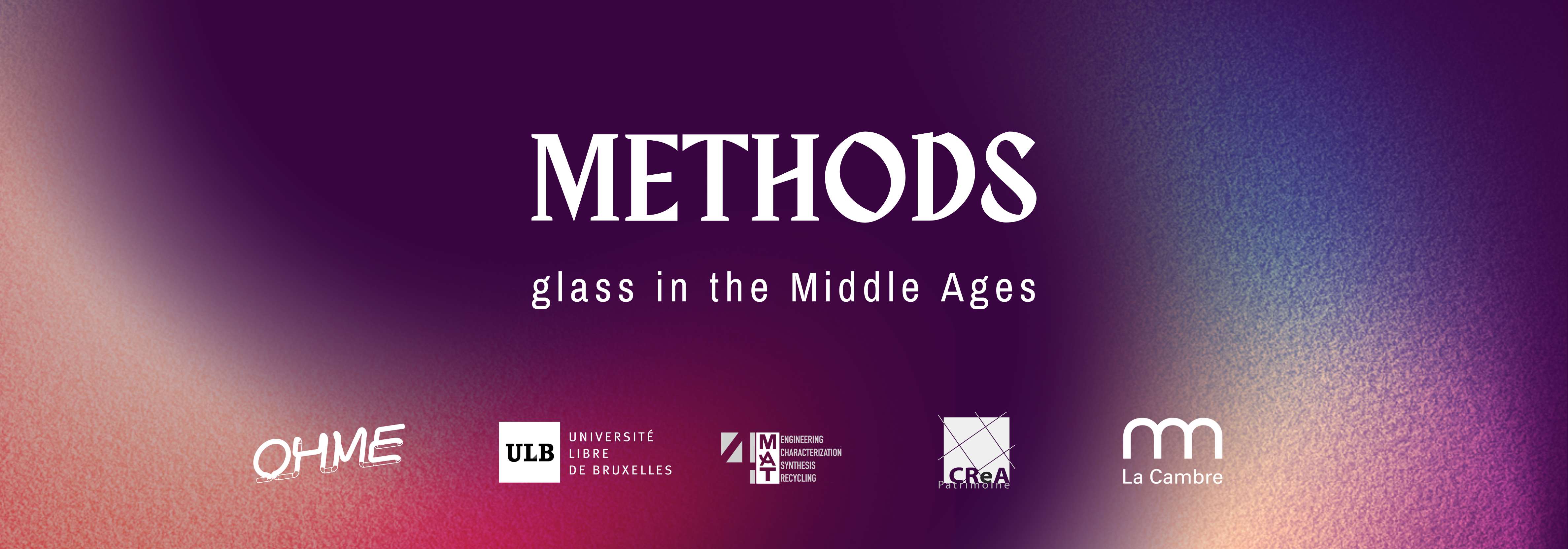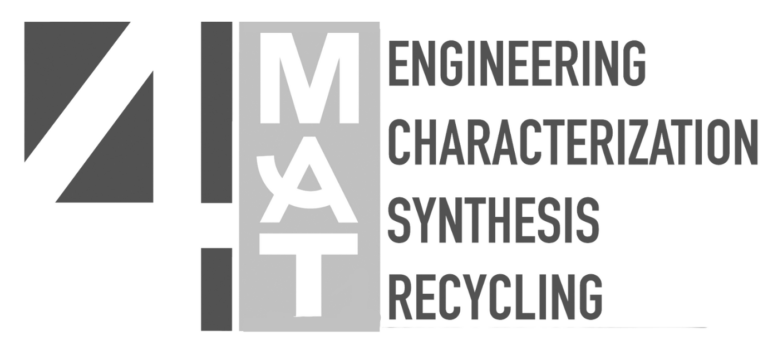Methods residency | Call for applications

This call is now closed.
The selected artist will be announced on 25 April 2024.
Each year, Ohme supports five artists through artistic and technical residencies. Through this initiative, depending on the specific needs of each artist, Ohme actively supports the creation of unique research projects which are then presented to the general public. In particular, the organisation offers solid technical and scientific support for the arts and crafts, working in networks with researchers, and promoting exchanges between art, science and technology.
In collaboration with ULB departments 4MAT and CReA-Patrimoine, as well as ENSAV La Cambre, Ohme is launching a call for artists/craftspeople on the subject of medieval glassmaking. The project is rooted in Alicia Van Ham-Meert’s research in archaeology and materials science (ULB), and benefits from the support of Clémentine Vaultier, artistic assistant at the ceramics department at La Cambre.
Description of the residency :
The call is aimed at a glass artist or craftsperson wishing to gain a better understanding of the chemistry and physics of glass and its history, and to carry out experiments in glassmaking using local resources (quartz, wood ash, metal oxides).
The residency will consist of several stages detailed below.
Phase 1 : field study, collection and calcination – 5 days
The artist will take part in a materials collection phase in the vicinity of Stavelot Abbey, with the aim of sampling, labelling and storing these materials. A calcination phase will also take place on site to collect ashes, particularly fern ashes, in several places. This collection will take place over several consecutive days.
Some students from the La Cambre ceramics workshop will also be joining in the collection, with the aim of making ash glazes afterwards. Several members of Ohme, as well as artists and members of the public interested in this activity, will also be taking part. The collection and calcination days will culminate in artistic and scientific discussions about fire, in connection with Clémentine Vaultier’s artistic research project.
Phase 2 : laboratory study – 5 days
Alicia Van Ham-Meert and the artist will analyse the collected materials together using modern analysis methods (fluorescence, x-ray diffraction), exchanging their knowledge and practices, and will produce glass samples from several recipes. The metal oxides collected will also be used to consider various strategies for colouring the glass. The artist selected will have the opportunity to acquire a better scientific understanding of glass, to practise chemical analysis of the materials collected and to be able to anticipate his or her work in the studio.
Phase 3 : working with glass in the studio and visual research – 20 days
The artist will experiment in his or her own studio with larger quantities of the materials collected, and in particular will have to blow glass recipes with a muff and make flat glass. This will enable them to understand the practical challenges faced by craftsmen of the time and to assess the effectiveness of using different glass recipes.
Once they have mastered these new glass compositions, the artist will be able to develop their own artistic research based on these medieval glass recipes. The artist will then be able to use the manufacturing techniques of their choice, and play with the different glass compositions made with the resources collected. The artist will be able to explore how variations in materials, and even seasonal variations, influence aesthetics and form.
Phase 4 : presentation of the research – 3-day festival and exhibition
The research experiments will be shown in Brussels on 11, 12 and 13 October 2024 during the Curieucity festival, a festival to raise awareness of science and the arts, organised by ULB and VUB in partnership with Ohme. This presentation should ideally take place around a wood-fired oven in the public space and will also be accompanied by scientific and artistic presentations by Alicia Van Ham-Meert and Clémentine Vaultier. The research project will also be presented at the annual Ohme showcase exhibition in February 2025.
What we are looking for
We are looking for a glass artist or craftsperson with solid practical experience in glass shaping, and ideally in glassblowing techniques. Although glassblowing skills are not strictly required, they will be considered a significant asset.
The artist or craftsperson will also be interested in the physico-chemical properties of glass and the use of local resources to produce it.
The artist or craftsperson will have an interest in traditional methods of glass production and ideally experience of working with wood-fired kilns that can partially reproduce ancient manufacturing conditions.
The artist or craftsperson must be able to produce and shape glass independently in the workshop (kiln, tools, etc.).
The artist or craftsperson will have a good command of French and/or English.
The artist or craftsperson does not need to be based in Belgium, but as regular transport costs are not foreseen in this project, Belgian residents will be favoured.
What we offer
• A total budget of €6,000 excluding VAT to be divided between the artist’s remuneration and production costs (energy), depending on the proposed project.
• Access to cutting-edge material science and archaeological knowledge
• Experience of glassmaking using local resources
• The opportunity to work on your glass compositions in depth and to systematically analyse your materials
• Consider different strategies for colouring glass using natural materials (metal oxides).
• The opportunity to exhibit his research at an art and science festival in Brussels and at a group exhibition at Ohme.
Residency timetable
• Application deadline: 14/04/2024, 23:59
• Announcement of the selected candidate: 25/04/2024
• Harvesting and lab phase: 10 days to be planned between May and June 2024
• Workshop research days: 20 days to be planned between June and September 2024
• Research presentation event: 11, 12 and 13 October 2024
• Presentation of the project as part of Ohme’s annual showcase: February 2025
How to apply
If you are an artist interested in this artistic residency, send your application before 14/04/2024, 23:59, including the elements listed below in a single PDF to be sent to the following address: opencall@ohme.be
• You CV up to date
• Your portfolio including relevant projects
• A text of no more than one page, in French or English, explaining your interest in the residency and any artistic intentions for it
• A statement of intent, maximum two pages, in English, relating to the artistic research project you wish to develop or refine, including a description of the project.
• A completed contact form – download here
We look forward to working with you. If you have any questions or would like more information, please contact us at opencall@ohme.be.
Partners
Alicia Van Ham-Meert trained as an engineer, and then pursued a career in scientific archaeology. She holds a Master’s degree in Archaeological Sciences from Oxford University, and specialised in the development of non-destructive methods for studying ancient glass and metals during her doctorate at the KU Leuven. An expert in isotope analysis, she also worked on medieval wood for the production of glass from wood ash in the TIMBER project at the University of Copenhagen. She is also renowned for her interdisciplinary and collaborative approach to archaeology.
Continuing her research today, Alicia Van Ham-Meert is focusing on the historical and archaeological study of glass production in Stavelot Abbey, established in the mid-7th century. In studying the case of Stavelot, she is also looking at the history of glass on a local and international scale, through the analysis of glass samples recovered during excavations. This research uses advanced analytical methods to investigate these questions, and is based on an approach that integrates the study of history, archaeology and materials science.
In this study, particular attention is paid to the collection of raw materials with the aim of faithfully recreating medieval glass recipes. Alicia undertakes meticulous fieldwork to collect the quartz/sand and plant matter essential for glassmaking, using methods that are thought to have been used in the Middle Ages. Alicia then uses these materials to reproduce historical recipes for medieval glass, drawing on ancient texts, to better understand the processes of the time and their environmental impacts.
Clémentine Vaultier, a French artist based in Brussels, trained as a ceramist but is more passionate about the world of fire than the objects it can create. She explores how we produce, use and share heat, bringing together ceramics, performance and education around this element. By creating, collecting and rearranging technical, historical and archival material, and in dialogue with others, she weaves narratives around heat as an essential human need and a phenomenon in itself. She is an artistic assistant in the ceramics department at La Cambre and coordinates the transdisciplinary module ‘firing together here’, a position in which she opens up the collection stages to the ceramics community at La Cambre.

4MAT is a department of the Brussels School of Engineering of the Université libre de Bruxelles (ULB).
The department’s research activities focus on inorganic materials, and cover the entire life cycle of materials, from their synthesis and processing to the optimisation of their (micro)structures for a given application and the best possible management of their end-of-life. This approach is primarily motivated by the increasing scarcity of resources, which makes sustainable development a priority.
The research topics are of both fundamental and industrial interest. This implies a wide variety of research funding schemes, ranging from European and national projects to direct funding by industrial partners.

The Centre de Recherches en Archéologie et Patrimoine CReA-Patrimoine brings together all the research programmes of the Université libre de Bruxelles in the fields of archaeology and heritage, both in Belgium and abroad.
It provides practical training for students in field archaeology and is the main point of contact for the public authorities responsible for heritage.
Project Partners

This residency programme is organised thanks to the support of Innoviris and of the Fédération Wallonie-Bruxelles
